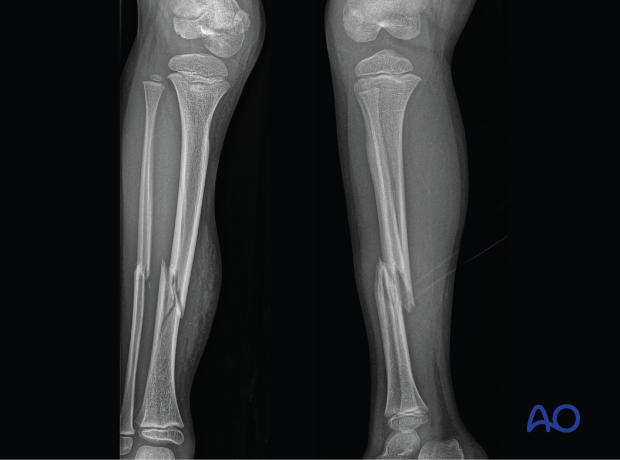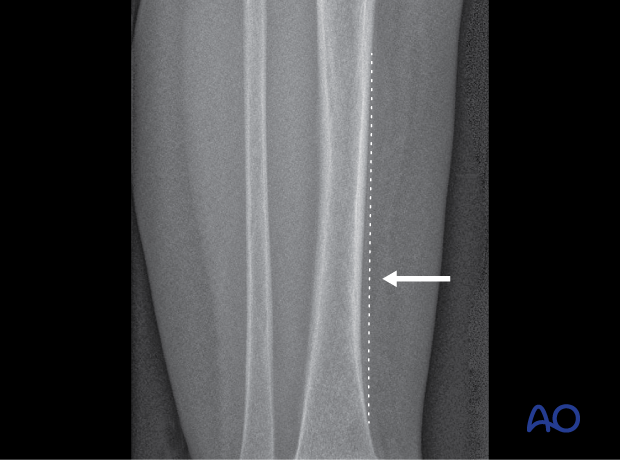Radiological evaluation
1. General considerations
X-rays in two planes are usually sufficient for diagnosis and planning treatment of tibial shaft fractures.
CT/MRI scans may provide useful information in selected cases.
2. Plain x-rays
X-rays in the AP and lateral planes including the knee and ankle are required to:
- Identify the location and extent of injury
- Classify the injury pattern
- Evaluate the physes
- Assess the degree of displacement
- Assess stability
- Identify additional injuries
- Identify preexisting contributory pathology
Additional views of the ankle in two planes are necessary if a distal tibial fracture is suspected.

Toddler’s fractures
These fractures may not be visible on initial x-rays (left image).

They may only be detected by the appearance of callus on a follow-up x- ray.














